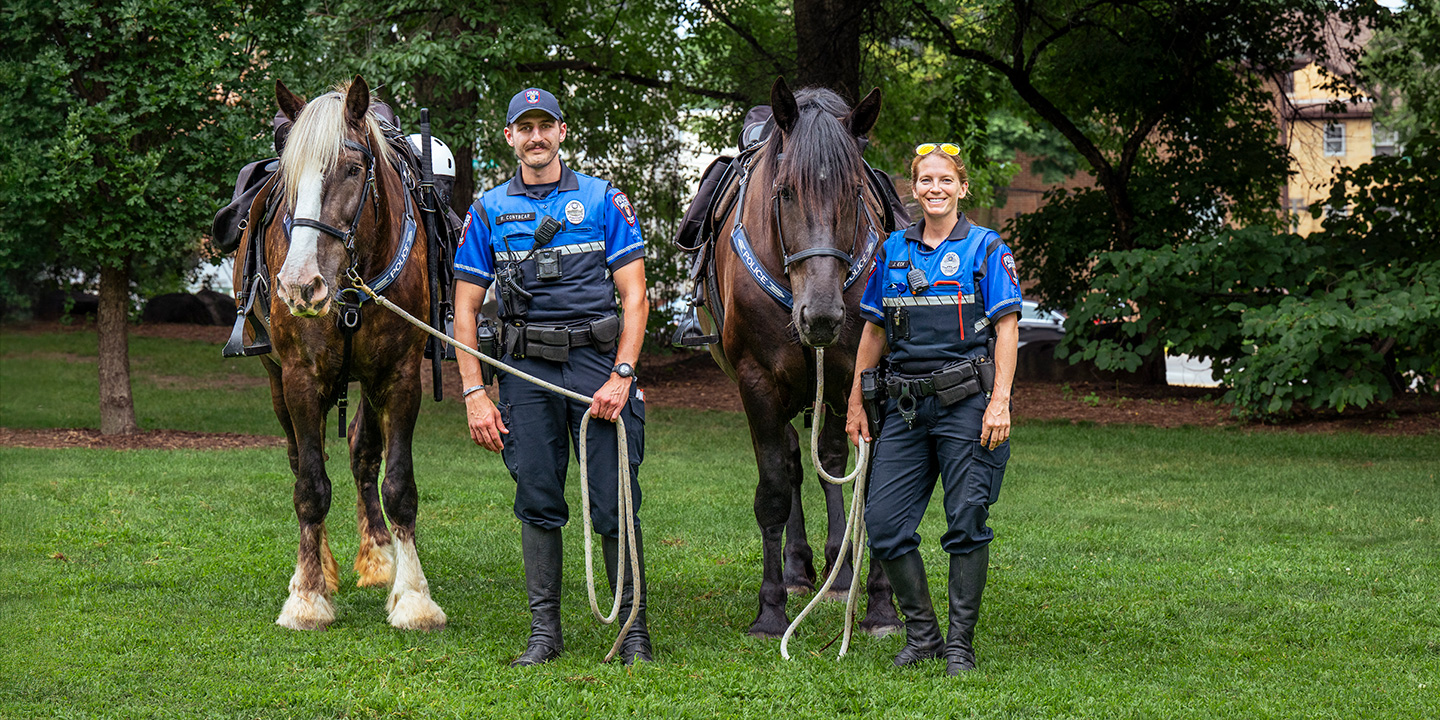
Horse Power
The UW Police Department’s equine partners build trust and connection with the community.
In 1915, there were more than 20 million horses in the United States. Most of them worked plowing fields and moving people. When tractors and cars came along, many of those horses were put out to pasture. By 2023, the U.S. horse population was 6.65 million — barely a third of its peak a century earlier.
Today, most of the horses that do work are the equine equivalent of professional athletes: racing and showing. But a select few pursue more modest careers in public service.
Two of those horses are Rettke and Vetter. They and the human officers who ride them, Jolene Eck and Ryan Conybear, make up the UW Police Department’s Mounted Unit.
You’ve probably seen them standing guard at Badger football games or keeping the peace on busy weekend nights downtown. But the Mounted Unit plays another, less visible role on the UW force — one that cars would be hard-pressed to replace.
“It’s a way for us to make a connection with our students and our community,” Conybear says.
Champing at the Bit
Before cars, police horses were the fastest way for officers to get around. A 1929 Milwaukee newspaper boasted that the city would purchase four horses from the U.S. Army for the city’s police force. But in the 1940s, the Milwaukee police motorized, and the horses were phased out.
By the fourth quarter of the 20th century, interest in mounted police rebounded, as departments recognized the animals’ prowess in public relations. The City of Madison’s Mounted Patrol Unit got its start in 1986, and the UW Police Department (UWPD) Mounted Unit began in 1989.
Early on, as with many latter-day mounted patrols, the UW’s officers rode their personal horses, so the unit’s size (and existence) fluctuated. In 2015, the unit’s last horse, Vegas, was diagnosed with an incurable muscle disease. In 2017, Vegas was put down after serving 12 years with his owner, Assistant Chief Kari Sasso.
The unit was essentially dormant until 2020, when UWPD leadership made a push to revive it. A call went out to the officers to gauge interest in mounting up. Eck and Conybear were the first to put their names in for the job. Rettke and Vetter were purchased by the university and officially joined the force in 2022. In honor of the 50th anniversary of Title IX, the horses were named after two legendary UW female athletes: Jessie Vetter ’09 (hockey) and Dana Rettke ’21 (volleyball).
Back in the Saddle
When they started with the Mounted Unit, Eck and Conybear worked four to five regular patrols per week, responding to calls for service as any other officers would. Except instead of showing up in a squad car, they showed up on horseback.
“We found some limitations,” says Eck. “There are certain calls for service that we can’t necessarily get to as fast as you could in a vehicle — off-campus buildings or the far west side.”
In those days, the unit even performed routine traffic stops. The horses wore a breast collar fitted with lights, and the officers had lights on their vests and saddlebags that could flash red and blue like the lights on a police car. In lieu of sirens, the officers used whistles to get drivers to pull over.
“Not every time we attempted a stop did a car stop,” Eck admits.
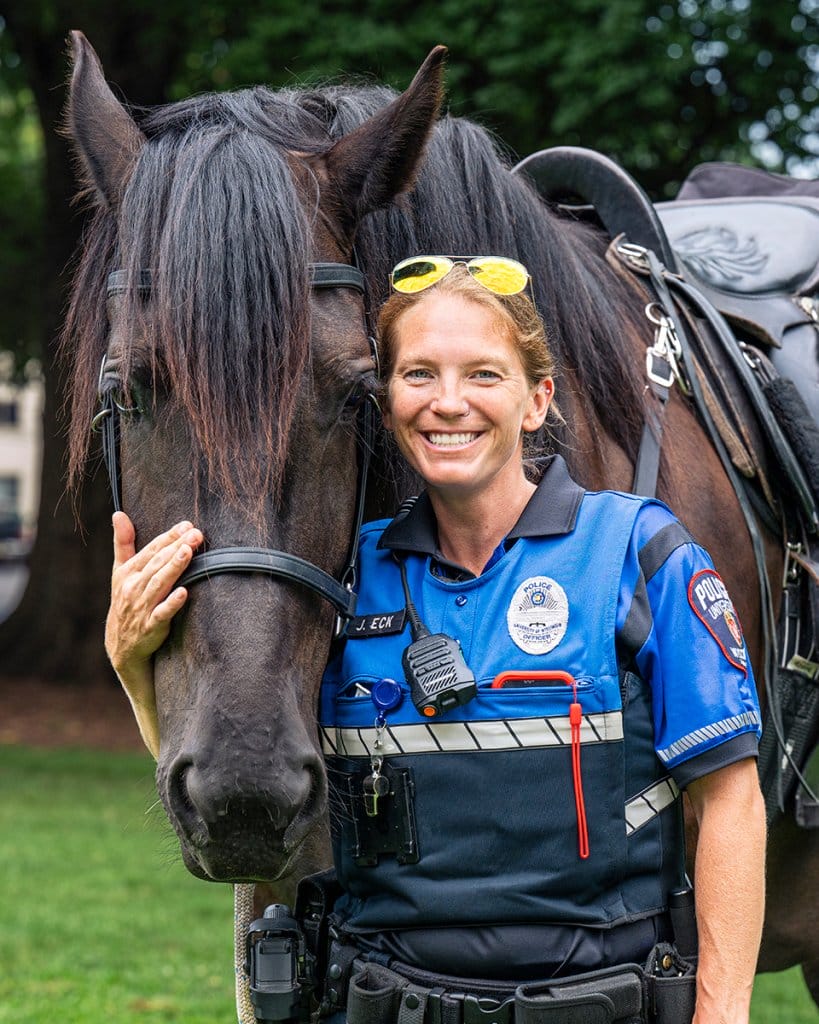
The mounted officers typically develop very close bonds with their equine partners.
To be sure, there are tasks for which gas-powered cruisers are better suited than grass-powered ones. But Vetter and Rettke can work a crowd.
Today, most of the Mounted Unit’s duties involve interacting with the community. In large crowds, like those on game days or late nights on State Street, the horses’ height gives the officers extra visibility. And the animals can move through congested areas more nimbly than a car.
Then there’s the intimidation element. Rettke stands five feet eleven inches at the shoulder and weighs almost 2,000 pounds; Vetter, the runt, is 5 feet seven inches and 1,750 pounds. In many cases, Eck says, the sheer size of the animals can deter would-be troublemakers.
“If people on State Street or Library Mall get into a fight, just bringing the horses to that area can make them want to leave,” Eck says.
But the primary effect of the horses’ presence is positive. When they’re not doing crowd control, they’re usually out on “community rides” — easy- going patrols through neighborhoods or visits to specific spots on campus. People are encouraged to pet the horses and get to know the officers.
“A lot of smiles and excitement” are typical reactions, Eck says.

UWPD officers get reinforcements from the Madison Police Department’s mounted unit for Badger games.
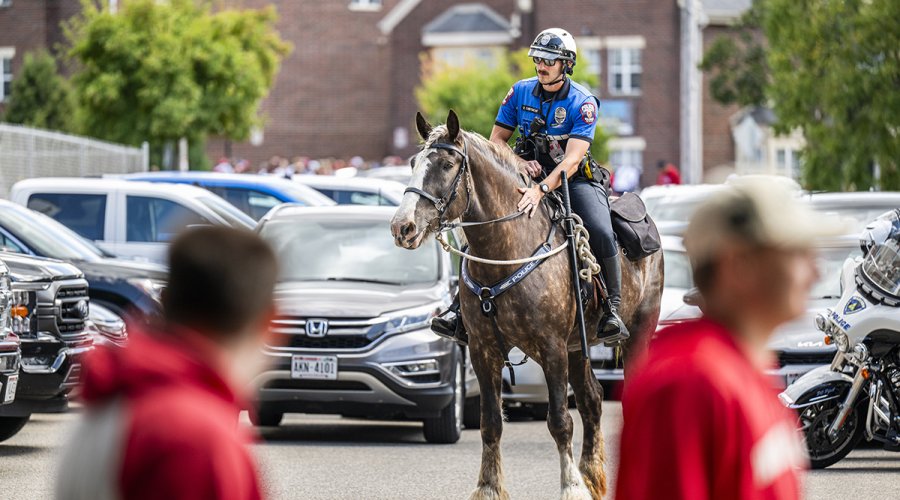
Conybear and Vetter watch the pregame crowd around Camp Randall Stadium before a Badger football game.
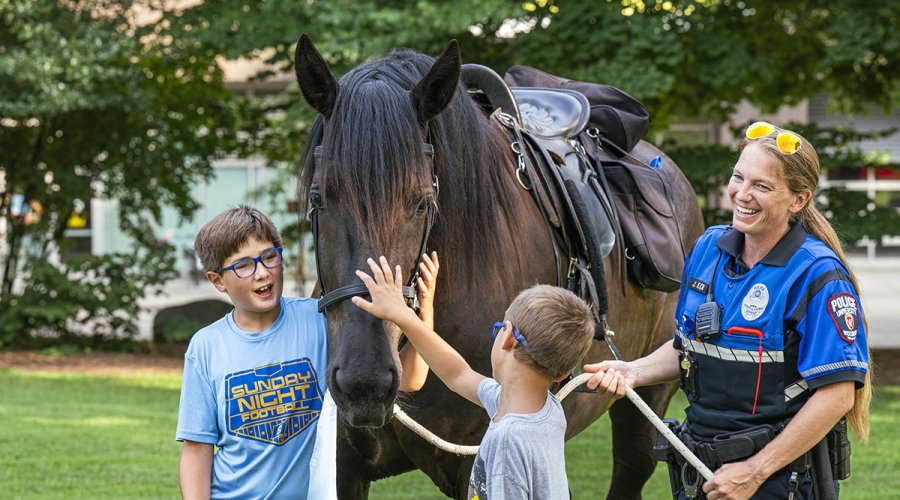
Eck encourages campus visitors Tyler and Cooper Yacco, of Rochester, New York, to pet Rettke.
The community rides take the unit through neighborhoods such as Eagle Heights and to stops like the dean of students’ office. The officers make a special point to visit residence halls, Eck says, “so that when the students see us, they’re not like, ‘Oh my goodness, police are here.’ ”
Even in more chaotic environments, such as a Friday night on State Street, the horses can completely change the energy. Conybear remembers something an apprehensive stranger said to him on one such night: “ ‘I don’t really like police, but can I ask you a question about your horse?’ That’s the kind of stuff that sticks in your mind,” he says.
Horse Sense
What makes a good police horse?
The Mounted Unit doesn’t know much about Vetter’s and Rettke’s lives before they joined the force. They’re originally from Canada but came to the UWPD through Mounted Patrol International, a Texas-based mounted police training and consulting company.
There’s no statutory retirement age for police horses — the animals typically live for 25 to 30 years. The City of Madison’s Mounted Patrol Unit has a 23-year-old police horse, Bubba, who, according to Conybear, shows no signs of slowing down. Vetter is 13 and Rettke is eight.
Both are draft horses, bred for agricultural work. Rettke is a Percheron, with a dark brown coat and a mane and tail to match. Vetter is a Clydesdale-Percheron cross with a dappled coat and flaxen mane that’s neatly braided during hot summer months. The horses were selected for their strength, size, and temperament — calm, cool, and collected. But what really sets them apart is their training.
The Mounted Unit’s work requires a level of social awareness that both horses and humans have honed over the last three years. To strengthen the bond between horse and rider, the officers were partnered with specific horses: Eck, a more experienced equestrian, with the younger Rettke; Conybear with the more mature Vetter.
In addition to learning standard care and riding techniques, the officers had to train the horses to be comfortable around crowds and loud noises — and, most importantly, to be comfortable around them.
“We have a pretty close relationship,” Conybear says of Vetter. “She’s a very opinionated lady. She’ll tell me when something bugs her, whether it’s how she tips her ears or her breath work and things like that.”
Eck says working with Rettke has taught her as much about herself as it has about horses. “We can’t both be energetic and fast-paced,” Eck says. “She’s taught me that sometimes I have to just keep calm throughout my whole body, because she can sense that when I’m riding.”
Eck says both horses are “definitely food motivated.” During our interview, when the officers weren’t paying close attention, Rettke and Vetter availed themselves of the freshly cut grass across from the UW police station on Monroe Street.
The two-horse team may take a little more upkeep than a 400-horsepower squad car. The Mounted Unit spends eight hours a week training at Dawson Pointe Stables in Oregon. Add to that the time it takes to get the horses ready for work — brushing them, cleaning them, loading them into the trailer, and driving them to wherever the day’s event is, all of which the officers do themselves. And, of course, there’s the poop. (The officers always pick up after their partners.)
But at the end of the day, the advantage is clear. No one wants to pet a police car.
Video by Jason Weiss
Jess Miller MA’25 is a Madison-based writer and communications manager.
Published in the Winter 2025 issue

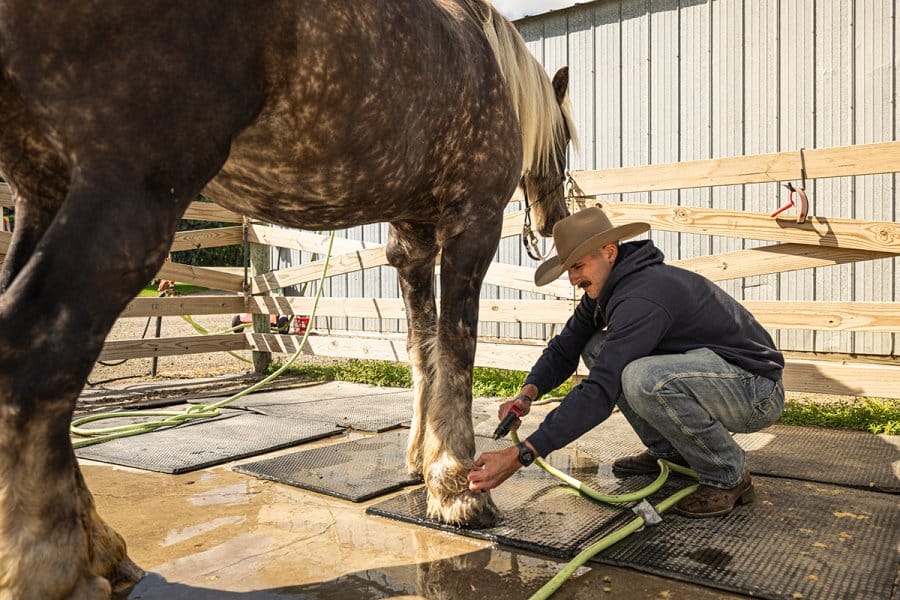



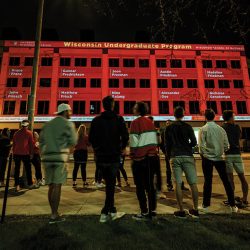
Comments
No comments posted yet.